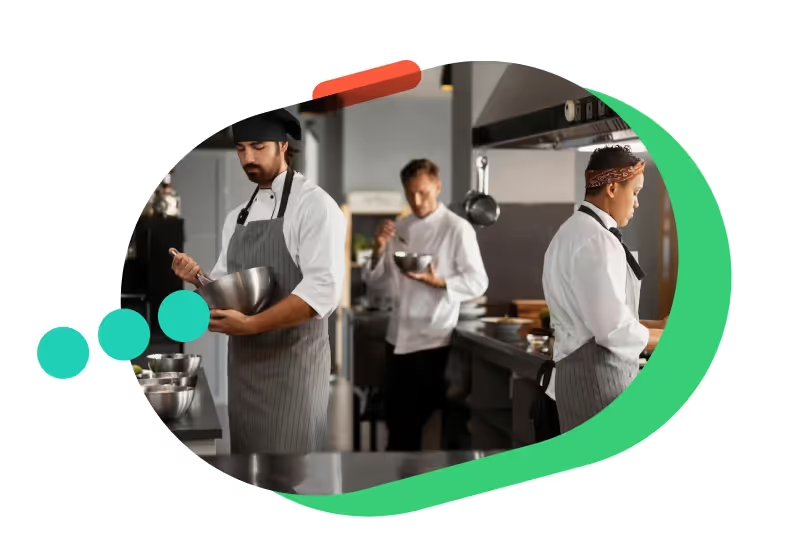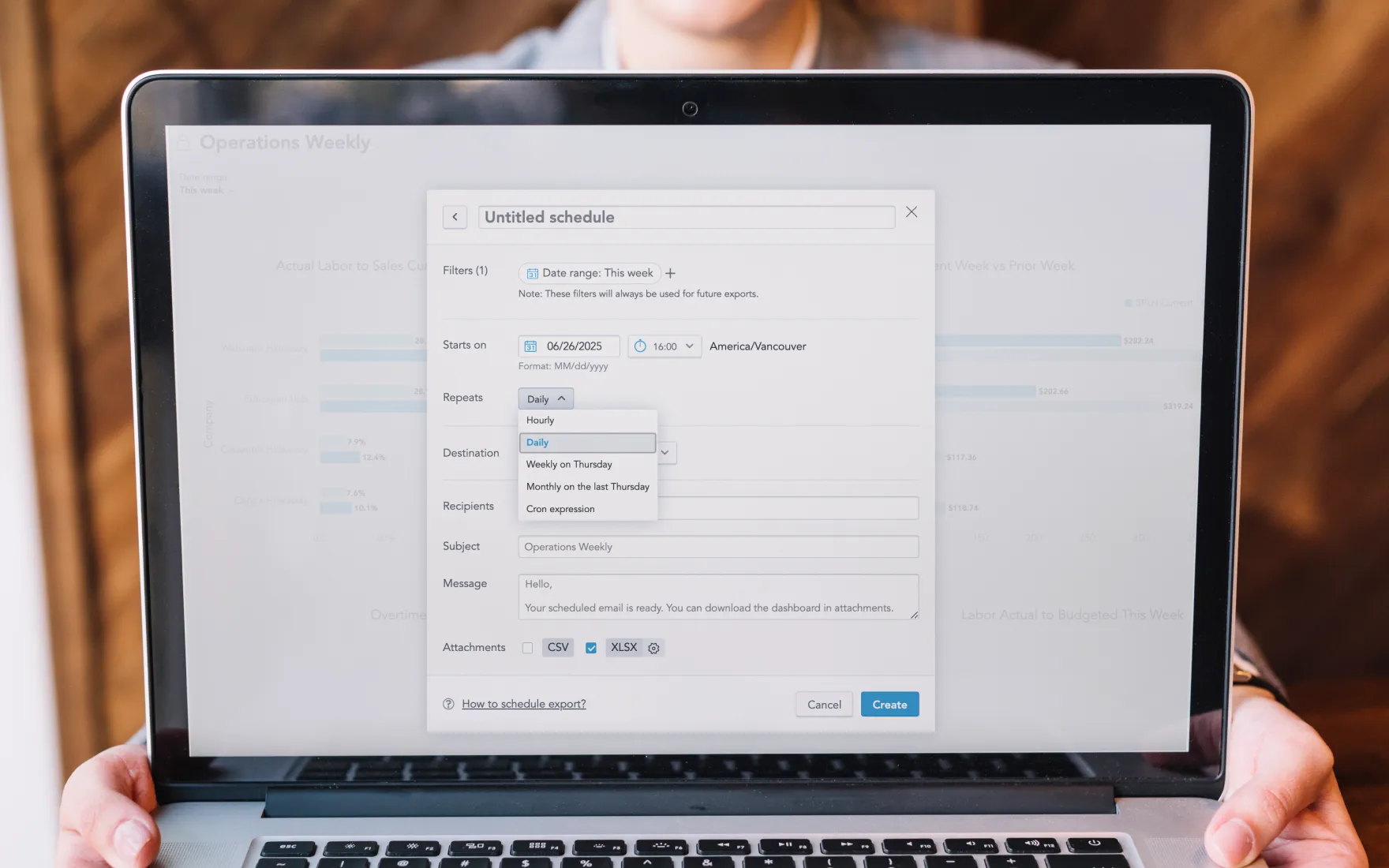5 Benefits of Cross-Training Your Team

According to a report recently released by the CDC, approximately 40% of food poisoning outbreaks were caused by people who went to work while sick. For anyone who has ever worked in the restaurant industry, this should come as little to no surprise. Many employees already feel the strain of being understaffed. Calling off means that you lose that money and face the wrath of your fellow team members – who might not believe that you were sick in the first place.
Ultimately, though, as an owner or manager, it’s an awful thing to promote – directly or indirectly – and hurts everyone involved: the customers, the employees, and the business itself.
Employees shouldn’t be afraid to call off work. Cross-training your team is a great solution to creating a more resilient and well-rounded team.
Furthermore, the pandemic saw record resignations and labor shortages across North America, with those former workers citing limited career growth and bad relationships with coworkers as some of the primary reasons for their discontent. Cross-training your employees, as you’ll see, can help abate some of those issues as well.
In this article, we’ll cover the five benefits of cross-training your team.
1. Cross-Training Improves Productivity
Cross-training staff involves training employees to perform a variety of roles and tasks across different areas of the establishment: bartending, front of house (host, server, busser), kitchen staff (dishes and prep), and even cooking.
One of the largest benefits to cross-training is increased productivity. This allows workers to develop a wider range of skills and knowledge, allowing them to contribute to different tasks and projects. If a table needs bussing, someone can jump in so that a customer can be seated promptly. Back up of dishes in the kitchen? Another kitchen team member can tackle that with ease. This flexibility helps fill gaps in the workflow and ensures that work continues during busy periods, even when team members are absent or on leave, which can happen fairly frequently. A cross-trained team ensures that restaurant operations are always working smoothly, no matter who calls in sick at the last minute.

2. Cross-Training Increases Collaboration
72% of employees rank team communication as important to their satisfaction at work.
When employees understand various aspects of the business and their colleagues' responsibilities, it fosters better communication and teamwork. This improved collaboration can lead to more efficient problem-solving.
It can also allow employees to feel connected to the business at large, like they have a future career within the restaurant. Encouraging employees to learn more about the business also encourages them to communicate with the manager and other, more senior, restaurant staff. Not only does this communication foster mutual respect, it also allows them to seek more opportunities for growth.
3. Cross-Training Enhances Customer Service
Having staff that understands multiple areas of the business can greatly enhance customer service. If your waiters can intricately explain the exact ingredients of the specialty house mojito or the potential allergens of some of your most popular dishes, they can address customers’ needs and questions efficiently and effectively.
Cross-trained employees also reduce wait times: hosts can clean tables; barbacks can deliver drinks; line cooks can run meals. As a result, the customer experience is much more efficient. Instead of running into issues and slowdowns when a certain team member is preoccupied, operations can run smoothly and the customer leaves with the impression that each team member is caring and knowledgeable, and that the establishment itself is organized and well-run. When your team works together, the customer receives the highest level of care.

4. Increase Adaptability and Reduce Dependency
By cross-training employees, restaurants improve their adaptability. Cross-trained teams can easily adapt to policy changes, staffing issues, and last-minute call-offs (or no-shows). Since everyone becomes sharp and flexible, this lessens the impact when key team members are unavailable.
If the bartender is out on a smoke break and you only have one full-time bartender, it’s always a good idea to have someone who can keep an eye on the bar in the meantime.
Unfortunately, due to staffing shortages, increased dependency on just a few staff members is becoming commonplace. Every manager has their go-to employee, but being overly reliant on just one or two staff members can spell disaster. Eventually, the stars will align and none of your “A-Team” will be available.
5. Cross-Training Makes Succession Planning Easier
Cross-training helps businesses identify high-potential employees and develop them into well-rounded professionals capable of assuming leadership roles in the future. The best employees are willing and able to adapt to whatever is required of them. In time, that type of person also makes the best leader.
This shows employees that you’re willing to invest in them and their skills. If a manager is out sick, for example, having a few more miscellaneous staff members who can handle managerial duties is invaluable: not only do your employees feel like they’re capable of greater career opportunities, but also you’re not left scrambling trying to see if your assistant manager can come in on their day off.

A Word of Warning
The two biggest reasons that restaurant workers quit:
- Low wages
- Lack of recognition
Cross-training your employees means that you trust and respect your employees enough to give them additional responsibility, but it’s important that they’re properly incentivized and recognized for this extra effort.
If they’re not, this can result in a fractured workforce with a lack of focus and more friction between team members and management. For example, your usual hostess (let’s call her Sam) might find that she likes tending bar better, so she might be inclined to look for a full-time bartending job. Even though you invested the time and effort into training Sam to take on multiple roles, she may leave for another job altogether if she isn’t appreciated or compensated competitively. It is important to listen to your employees and support their career goals.
Also, the pay should match the role – especially if there aren’t clear delineations for what certain employees are supposed to be doing at that time. If a food prep worker has to cover 3 hours of dishwashing, they should be paid the higher wage between the two. If a chef delivers dishes for an hour or chats with customers, their pay shouldn’t bump down to being on par with a waiter or waitress.
Although cross-training is highly beneficial for the business, ensure that you are not taking advantage of it to pay your employees less for doing more work. What’s good for the business could be bad for long-term morale, increasing turnover and increasing costs for training.
Conclusion: The 5 Benefits of Cross-Training Your Team
Cross-training involves training staff to handle multiple aspects of the restaurant business from hosting and serving, to bartending and dishwashing — and maybe even managerial duties.
Training employees to handle these tasks can:
- Improve productivity by reducing bottlenecks and filling in vacancies with ease
- Foster collaboration by increasing cooperation between management and low-level employees
- Reduce dependency by turning more team members into “stars” who are capable of handling many tasks
- Enhance customer service by improving employees’ knowledge and increasing operational efficiency
- Simplify succession planning by identifying exceptional staff members
Push Operations can help you cross-train your restaurant team effectively. Our state-of-the-art scheduling tool helps managers automate scheduling while saving on labor costs. You can see which roles need help, easily swap shifts, approve PTO, and recieve compliance alerts — all in one place! To learn more about how Push can help your cross-trained team, schedule a free demo.



